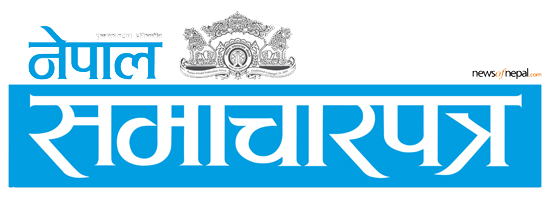Kabirash Sharma
Adventure sports in Nepal, once primarily profit-driven, have evolved into a cornerstone of sports tourism, drawing both domestic and international enthusiasts. With its unparalleled landscapes and rich cultural heritage, Nepal has emerged as a prime destination for activities such as cycling, high-altitude marathons, rafting, kayaking, canoeing, rock climbing, bungee jumping, paragliding, and triathlons. However, despite its immense potential, many of these sports lack sufficient promotion and global recognition.
Countries like Switzerland have maximized their challenging terrains and natural beauty to establish themselves as leaders in sports tourism. Similarly, Nepal could transform its adventure sports sector into a world-renowned industry by leveraging its unique geography and minimal investment through strategic publicity.
Rafting: A Hidden Gem in Nepal’s Sports Tourism
Nepal offers a world-class rafting experience, with rivers born from the majestic Himalayas cutting through its diverse terrain. Despite being home to six major rafting rivers, such as the Sunkoshi and Trishuli, the sport is yet to achieve international acclaim. While rafting began in Nepal in the 1960s with pioneers like French nationals and later Kurt Jorgestein, it remained a niche activity. The first international rafting competition in Nepal was held in 2001 on the Bhotekoshi River, later transitioning to the Trishuli.
Though the International Rafting Federation (IRF) recognizes Nepal as a prime rafting destination, the country has not hosted prestigious global competitions like the World Rafting Championship. Despite its natural advantages, Nepal lags behind countries like India, which host medium-level rafting events. With focused efforts, rafting could become Nepal’s flagship sports tourism activity, blending adventure with cultural immersion.
The International Eco-Challenge: A Multi-Sport Attraction
Initiated in 2013 by the Trekking Agencies’ Association of Nepal (TAAN), the International Eco-Challenge highlights Nepal’s diverse adventure sports potential. This triathlon event includes running, cycling, and rafting, attracting participants from around the globe. The competition’s inaugural edition featured a 6.5 km run from Bhutkhel to Tokha, a 14.5 km cycling route from Nagarkot to Sundarijal, and a 7.5 km rafting race on the Bagmati River, showcasing Nepal’s ability to host multi-sport events.
Everest Marathon: The Pinnacle of High-Altitude Racing
The Everest Marathon is an unparalleled event held at the base of the world’s highest peak, Mount Everest. First internationally promoted in 1985 by Jon Turner and Tony Hunt, this marathon takes place annually on May 29, commemorating Tenzing Norgay and Edmund Hillary’s historic ascent. Participants start from Gorak Shep (17,100 feet) and descend to Namche Bazaar (11,300 feet), making it the highest-altitude marathon in the world. The event’s global appeal continues to grow, with achievements like Hari Bahadur Rokaya’s Guinness World Record enhancing Nepal’s reputation as a high-altitude sports hub.
Cycling: Conquering Nepal’s Rugged Terrains
Cycling is steadily gaining momentum in Nepal, with its challenging trails offering a unique experience for adventure enthusiasts. Events like the Himalayan Mountain Bike Competition, broadcast globally by National Geographic in 2001 and 2002, showcased Nepal as a prime cycling destination. Despite interruptions during political unrest, the 14th Asian Mountain Bike Championship in 2008 marked a turning point, with Nepalese cyclist Sajjan Rajbanshi finishing 7th.
Special events like Yak Attack, a grueling race above 5,000 meters on the Annapurna Circuit, further highlight Nepal’s potential to become a leading destination for high-altitude cycling. Proper promotion of such unique competitions could establish Nepal as a global hotspot for mountain biking.
Paragliding: Soaring Above the Himalayas
Nepal’s paragliding scene is among the most thrilling in the world, particularly in Sarangkot, Pokhara. This picturesque location offers year-round paragliding opportunities, with take-offs at 1,450 meters and landings near Fewa Lake. Nepal’s affiliation with the International Aeronautical Federation (FAI) and hosting of events like the 2015 pre-World Cup paragliding event have positioned the country as a premier paragliding destination.
Nepal’s achievements in the sport are noteworthy, including a silver medal at the 2018 Asian Games and strong performances in the Paragliding World Cup Asian Tour. With continued development, Nepal has the potential to host prestigious paragliding championships, further cementing its place in the global sports tourism arena.
Conclusion
Nepal’s diverse geography offers limitless opportunities for sports tourism. By fostering infrastructure, promoting events, and leveraging its unique cultural and natural assets, Nepal can position itself as a global leader in adventure sports. From rafting on the Sunkoshi to paragliding over Pokhara and cycling the rugged Annapurna trails, the potential is vast—Nepal only needs to seize it.












प्रतिक्रिया